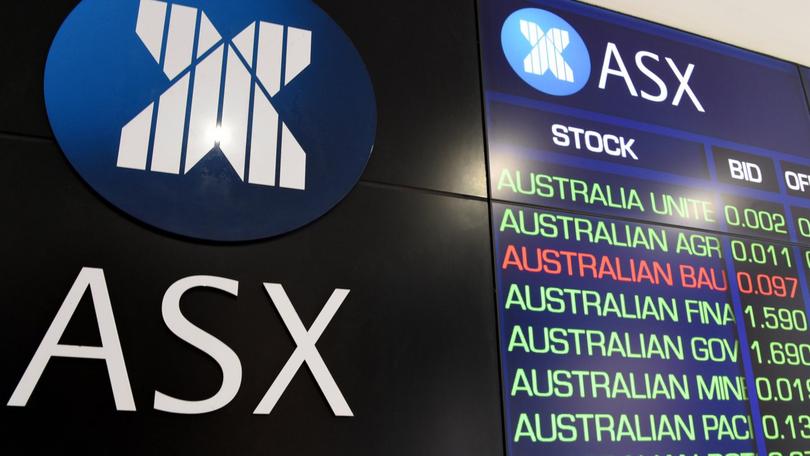Aussie share market tanks as investors show nerves over Donald Trump’s tariffs on Mexico, China and Canada

The Australian share market was plunged deep into the red on Monday as investors weighed the impact of US President Donald Trump’s wave of savage tariffs slapped on Mexico, Canada and China.
One leading market analyst described the crippling imposts as the most significant trade shock since the 1930s when a round of US tariffs exacerbated and extended the Great Depression.
The Wall Street Journal’s editorial board went further, branding it the “dumbest trade war in history”, saying “Mr Trump can’t repeal the laws of economics any more than Joe Biden could on inflation”.
Sign up to The Nightly's newsletters.
Get the first look at the digital newspaper, curated daily stories and breaking headlines delivered to your inbox.
By continuing you agree to our Terms and Privacy Policy.“He seems to be like a poker player who’s betting his whole stash on the first hand,” said Steven Englander, global head of G-10 FX research at Standard Chartered. “The market just wasn’t prepared for it.”
But Mr Trump was standing firm, while conceding US consumers could be worse off under the new policy.
“This will be the golden age of America!” Mr Trump posted on social media on Sunday night. “Will there be some pain? Yes, maybe (and maybe not!)“
The ASX200 gave up gains that pushed it to a fresh record high last week. It tumbled almost 2 per cent at the open and failed to make any meaningful recovery, closing down 152.9 points or 1.8 per cent to a two-week low of 8379.4 — its worst loss in four months.
The US greenback and oil rallied on news of the tariffs. But the Aussie dollar was smashed and fell below US61¢ for the first time since early in the COVID-19 pandemic, dropping as low as US60.88¢. It later recovered but was still down sharply, buying US61.22¢, down from US62.25¢ at Friday’s close.
Not one sector was spared in the rush for the exit, with consumer and discretionary stocks, miners, banking, health care and tech stocks taking the full force of the blow from nervous investors.
Rio Tinto and BHP were down about 2 per cent and Fortescue tumbled 4.4 per cut. But gold miners appeared to have dodged the worst of the retreat from diggers and shippers. All of the big four banks were lower.
Fisher & Paykel Healthcare and luxury goods online retailer Cettire were among the biggest casualties after revealing their exposure to the US market.
Fisher & Paykel’s stock plunged 7.4 per cent to $31.80 after it told investors it manufactured about 45 per cent of its medical devises and systems in Mexico and was still assessing the “complexities associated with the imposition of the tariffs”.
Cettire — which tumbled more than 18 per cent — said 7.5 per cent of its gross sales sourced from the US related to items manufactured in the jurisdictions impacted by the new tariffs.
The US President at the weekend followed through with his election promise to punish the US’s three biggest trading partners, triggering countermeasures from all three countries.
Tariffs of 25 per cent were placed on imports from Canadian and Mexico while China copped an extra 10 per cent levy. There was a carve out for Canadian oil and gas, which will cop a 10 per cent tariff.
The new measures for the US’s three largest trading partners start on Tuesday and are tipped to affect more than 40 per cent of US merchandise imports.
Mr Trump said the tariffs were part of an attempt to stop US imports of the killer drug narcotic fentanyl, which he says is increasingly being made in Canadian labs owned by Mexican drug bosses using ingredients imported from China.
The synthetic opioid has been linked to tens of thousands of deaths over the past decades.
It didn’t take long for three countries to respond.
Canadian Prime Minister Justin Trudeau slapped retaliatory tariffs of 25 per cent against $US155 billion ($253b) of US goods soon after the Trump administration announced the tariffs. Mexico also vowed retaliation following the news, though did not reveal specifics.
President Claudia Sheinbaum slammed Mr Trump’s tariffs and said she had instructed the secretary of the economy to “implement the Plan B we have been working on, which includes tariff and non-tariff measures in defense of Mexico’s interests”.
China said it would file a lawsuit with the World Trade Organisation in response to the duties, and “take necessary countermeasures”.
“This is the most significant trade shock since the Smoot-Hawley tariffs of the 1930s, which are widely blamed for exacerbating and prolonging the Great Depression,” said RBC Capital Markets chief economist Frances Donald.
“This shock far surpasses the 2018 tariffs in magnitude, diminishing the value of that period as a helpful guide for the economic impact ahead.”
“For context, in 2018, the US average import tariff rose from 1.5 per cent to roughly 3 per cent. Under the new policy, the US average tariff rate [rises] to nearly 11 per cent, the highest average ratio since the 1940s.”
RBC Capital’s London-based global head of FX strategy, Elsa Lignos, said that while some were saying that the tariffs wouldn’t last more than a few weeks, she was among those who saw them as a “big shock that we weren’t priced for”.
“Up until now I also thought Trump’s main goal was to extract a ‘win’ even if it was more iconic than substantive,” Ms Lignos wrote.
“But the very short lag to implementation and the way he’s gone about this makes me think he actually believes tariffs are going to be the new income tax.”
Australia is expected to remain resilient to the global trade fractures, according to economists at Citigroup.
Australia’s deep political ties with Washington and its direct exports to the US only accounting for 3 per cent of total shipments in 2023 are among reasons Trump 2.0 will not be a “calamity”, Citi’s Australian economists Josh Williamson and Faraz Syed said in a research note on Monday.
“While a hit to global trade flows could cause incomes and GDP growth to decline marginally, natural shock absorbers such as the exchange rate and strong economies ties with rest of the world will likely imply minimal economic impact for Australia,” they said.
“We also consider that a trade war could lead to a decrease in goods prices domestically if exporters in China look for alternative markets to the US.”
Around a quarter of Australian imports are from China, with other parts of Asia and the US also featuring heavily. Citi also said its results are not too dissimilar to the RBA’s modeling on a large 3-4 percentage point decline in Chinese growth from US tariffs.
